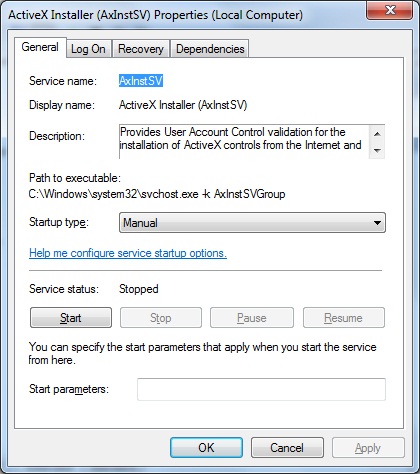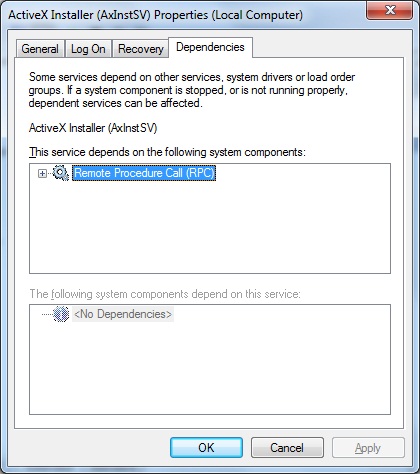Using the System Utilities
Administrative Tools
Services
- A service is a type of Windows application that runs in the background without user interaction. A service typically performs tasks for other software applications or performs housekeeping tasks for Windows 7. For example, the DHCP Client service is responsible for communicating on the
network to get a network address that allows Windows 7 to access servers and the Internet. Windows Firewall also runs as a service.
- The Services administrative tool is used to manage Windows 7 services. The details pane of Services has a standard view and an extended view that can be selected from
tabs at the bottom of the console. The extended view shows the description of the selected service at
the left side of the details pane and includes shortcuts for starting and stopping the selected service.

- The service information shown by the tool is:
- Name: Each service is given a name to identify it. You can modify the name of a service,
but it is not recommended. If you call a vendor for support, they expect services to be using
standard names.
- Description: The description of a service provides information about what tasks the service performs. Descriptions for Windows services are provided by Microsoft, while descrip-
tions for other services are provided by the vendor.
- Status: The status of a service indicates whether it is started or stopped. In rare cases a
service may have a status of starting or stopping if the service is experiencing problems
during startup or shutdown.
- Startup Type: Services with an automatic startup type are started when Windows 7 boots.
Services with a manual startup type must be started manually by a user, or by another application. Services with a disabled startup type cannot be started.
- Log On As: Each service logs on to Windows to determine its permissions to perform
tasks such as file manipulation. Services can log on as the Local System account, which has
full access to Windows 7 or a specific user account. Most Windows 7 services log on
as Local System. However, logging on as a specific user account is more secure. Some
Windows 7 services log on as Network Service or Local Service. Both of these accounts
are more limited than Local System.
- The properties of a service are:
- General: Displays the service name, description, path to executable, and start parameters.
In addition, there are buttons to start, stop, pause, and resume the service. Stopping and
starting a service is often performed when the service has experienced an error. Pausing and
restarting a service is typically done when testing service functionality.

- Log On: Allows you to specify the account name used by a service to log on to perform
its tasks.

- Recovery: Allows you to specify which action is taken after first, second, and subsequent
failures. The actions include taking no action, restarting the services, running a program,
and restarting the computer.

- Dependencies: Shows you which other services require this service to be running before
they can start. In addition, this tab shows you the other services that must be running for
this service to start.

Activity 3-7




